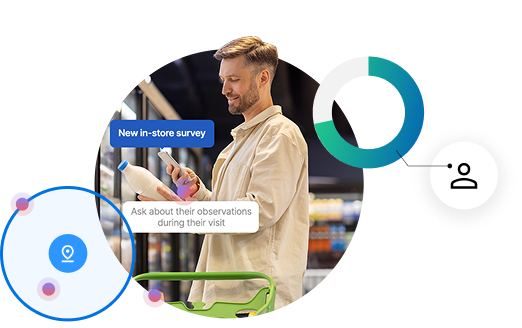In the relentless pursuit of speed and cost-efficiency, market research stands at a crossroads. The alluring promise of synthetic panels – digital twins, AI-generated look-alikes – offers a seemingly instant fix to the complexities of gathering human insights.
At MFour, we believe this tempting shortcut risks undermining the very foundation of effective decision-making: quality data. Poor data, whether from human fraud or algorithmic mimicry, inevitably leads to poor outputs, and from an end client’s perspective, synthetic panels are unlikely to improve things.
The Problem with Synthetic Panels
The appeal of synthetic panels is understandable. Imagine a world where you can instantly generate thousands of survey responses, test concepts, and explore market scenarios without the logistical hurdles and time constraints of traditional methods. AI’s ability to predict responses and fill data gaps based on existing patterns appears revolutionary.
However, the critical flaw lies in the source. If the AI models are trained on biased, incomplete, or even fraudulent real-world data – a pervasive problem in market research today – then synthetic outputs will not only replicate these flaws but amplify them. We risk creating a sophisticated echo chamber, confirming existing biases rather than revealing true, nuanced consumer sentiment.
But even if the data were clean, there’s still something synthetic panels can’t replicate: human behavior.
The Missing Element
The essence of market research is to understand human behavior, motivations, and unmet needs. Can a digital doppelganger truly capture the irrationality, the emotional depth, or the unexpected insights that only real people can provide?
Studies have already shown that synthetic samples can lack the variation and nuance present in human responses, often clustering towards middle-ground answers and failing to express strong opinions. This uniformity, while seemingly neat, can mask critical market distinctions and stifle innovation.
Furthermore, the lack of transparency surrounding the creation of synthetic data poses a significant ethical dilemma. When insights are presented to a client, they assume these insights are derived from authentic consumer voices. Without a clear understanding of the data’s origin, clients are essentially making critical business decisions based on a black box.
Introducing the “Nutrition Label” for Data Transparency
So how do we bring trust and transparency back into synthetic methodologies? Just as consumers deserve to know the ingredients and nutritional value of their food, end clients deserve to understand the “ingredients” of the data they are consuming. That’s why we’re calling for a “nutrition label” for synthetic panels — something that clearly discloses what went into the data and how it was made.
This label should include:
- Data Source: What kind of real-world data was used to train the AI? What were its limitations, biases, or potential quality issues?
- Methodology: How was the synthetic data generated? What algorithms were employed, and what assumptions were built into the model?
- Validation Metrics: How has the synthetic data been validated against real human data? What are the known deviations or areas where it may not accurately reflect real-world behavior?
- Limitations & Caveats: What are the inherent limitations of using synthetic data for this particular research question? What emotional or nuanced aspects might be missed?
Because in research, what’s behind the data matters just as much as the data itself.
The rise of AI in market research is inevitable, and its potential for efficiency and analysis is undeniable. However, we must not sacrifice the integrity of our insights at the altar of automation.
True innovation in market research lies not in replacing human insights with artificial approximations, but in leveraging technology to enhance and validate genuine consumer understanding. By demanding transparency and a “nutrition label” for synthetic panels, we can ensure that market research remains a trusted compass for businesses, grounded in the authenticity of human experience, not the illusion of insight.
The Core Ingredient Needed: Proprietary Data
At MFour, we’re not opposed to synthetic panels — we’re opposed to the low-quality, unvalidated data they’re often built on. If synthetic methods are going to play a role in the future of research, they need to be grounded in real, representative consumer behavior.
That’s why we supply the core ingredient synthetic panels need to be credible: proprietary data, collected directly from real, validated consumers. Whether you’re training AI, testing creative, or forecasting demand, our data is the foundation that separates authentic insight from artificial noise.
To trust what synthetic panels produce, we first need to know what they’re made of. That starts with a label that tells the truth.




